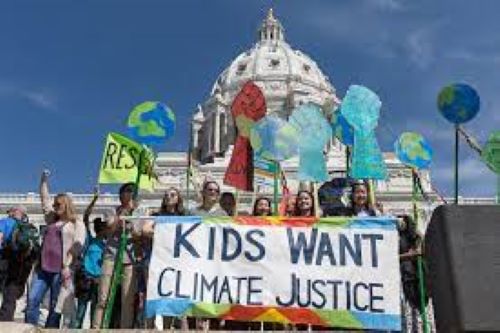How to engage children on the issue with hope and positivity.
Climate change is happening and nearly every child in the world will be affected.
Talking about climate change with our children can feel hard for many parents. It’s natural to want to protect kids from harm and worry. But if your child is a certain age, chances are they are already hearing about climate change, whether at school, online, or from their friends.
Unsurprisingly, children can feel many emotions about climate change, such as being anxious, frightened, sad, and angry, which are very natural reactions to something as uncertain and devastating as climate change.
While you can’t solve climate change for your child, you can help them discover the facts, know that they are not alone, and find ways to take action.
Here are some tips on how to have an honest and hopeful conversation about climate change without ignoring the reality and scale of the issue.
- Do your homework
No one has all the answers about climate change and it’s okay if you don’t either. There are many reliable resources available online including talks, videos, and articles that can help you brush up on the science. NASA has some great child-friendly resources on the topic. Speak with other parents to find out how they approach the topic with their children.
Remember: It’s okay if you can’t answer all the questions your child might have taken it as an opportunity to discover the answers together.
- Listen
To start the conversation about climate change with your child, find out what they already know and how they feel about the topic. You might be surprised by how much your child already knows and can express. Use it as a chance to listen to their fears and hopes for the planet. Give them your full attention and don’t dismiss or try to minimize any worries they have. Let them know that they can always come to you to talk about anything.
- Use simple science
You know your child best, so make sure the information is appropriate for them. A good starting point can be to find ways to relate climate change to their daily lives and explore the basic facts together. For example: “Humans are burning fossil fuels like coal and oil to run cars, fly planes and light homes. These all release greenhouse gases into the atmosphere that wrap around the planet like a bubble, making the climate hotter. A hotter planet means changes in weather, such as more floods and more storms. As the planet gets warmer, the polar ice caps melt and sea levels rise. It’s a serious problem, but many scientists and lots of young people are working hard to find solutions and make positive changes. And there are many things we can do as well.”
Pictures, maps and videos can help to visualize the issue and make it more tangible. A great resource to explore is Climate Visuals, which has compiled a library of images on the topic, from climate impacts to climate solutions.
- Go outside!
Try to expose your child to nature as much as possible. Encouraging them to play outside helps nurture their enjoyment of and respect for nature.
When you’re outside together pause and point out interesting sights, whether it’s a tree, a cloud, a cobweb or a bird. The simple act of slowing down and taking the time to appreciate nature can help children develop a curiosity and wonder for the natural world. Plant seeds together to see how something grows from nothing.
- Focus on solutions
For every problem you discuss, try to show a solution. Explore with your child examples of people who are working on ways to address climate change. Discuss positive and inspiring stories you see on the news or in your own community.
Talk about what steps you are taking as a family, such as reducing waste in your home, saving water, recycling, or switching off unused lights and appliances. This helps to reinforce the idea that everyone can do something to help address climate change.
Discuss ideas for other measures you can take as a family or in the community. Could you choose to walk or bike rather than take a car? Could you plant a tree?
- Empower action
Young people around the world are taking climate action into their own hands and to the doorstep of governments. Others are building new ways to use energy more efficiently, sharing solutions on social media and walking in weekly climate marches. Let your child know that many young people are standing up for our planet and they can too. If they show interest, introduce them to stories of climate change activists.

